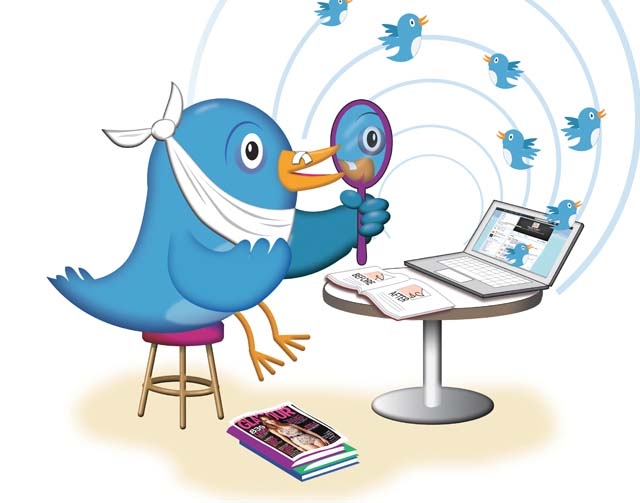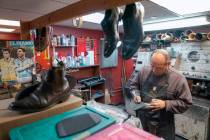More people going under knife to present ideal image online
When unflattering Facebook photos surface, keep your chin up.
According to the American Society of Plastic Surgeons, patients are taking that advice to the operating table. Chin augmentations soared 71 percent between 2010 and 2011. Doctors point to social media as the culprit.
“One of the changes I’ve seen recently is that people are coming in for consultations, and their one concern is that they don’t like the way they look in pictures,” says Jeannie Khavkin, a local facial plastic surgeon. “With increased use of social media, there’s an increased awareness of what they look like.”
A weak chin isn’t the kind of imperfection people wake up to every morning. It takes a profile view or low angle to highlight it, which camera phones and Facebook friends are more than happy to do. Once that happens, the knowledge that hundreds of users can view the photo, and the facial flaws exposed in it, compounds concern.
Khavkin holds Skype and iPhone FaceTime specifically responsible for the chin augmentation surge. Both video chat services make profile imperfections more pronounced because of camera angles. And, similar to the way celebrities develop heightened image-consciousness, both technologies allow users to stare at their live head shot for the duration of the conversation.
Bad camera angles aren’t the only social media impetus behind plastic surgery consultations. An American Academy of Facial Plastic and Reconstructive Surgery poll shows that 42 percent of people checked in with social networking sites, such as RealSelf.com, before scheduling appointments.
“Doctor’s practices are reaching out to patients and patients are reaching out to them,” local plastic surgeon Samir Pancholi says. “These patients pursue work quicker because they access information quicker.”
Pancholi has a boutique office, where customer service gets a more personalized touch. Ashley Vlastaris, marketing specialist for Pancholi’s office, manages each social media account, and says one of her objectives is to “give patients a feel of being part of our family.”
Vlastaris will wish staff members happy birthday via Facebook, distribute a “tip of the day” on Twitter, and link to cosmetic blogs on Pinterest. An Instagram account is in the works. It’s all an effort to encourage a certain familiarity, where inquiries are welcome and come naturally.
The procedure Vlastaris fields the most emails, Tweets and Facebook messages for is Vaser liposuction. This procedure targets fat cells and avoids tissues with blood vessels and nerves, which can leave a smoother result than typical liposuction. Rhinoplasty is a specialty of Pancholi’s so there’s never a shortage of those, but the one that’s really picking up popularity is vaginal rejuvenation.
The procedure can plump up the labia majora or “excise excess skin from the labia minora.” If there’s a next big thing, “that will be it,” Vlastaris predicts.
Apparently not all plastic surgery is motivated by Facebook photos.
For now, though, above-the-neck flaws continue to inspire plastic surgery pondering. So much so, Dr. Khavkin will address the matter in a “Best Face Forward — Understanding the Influence of Image” workshop at a private residence later this month, along with a women’s empowerment speaker and personal shopper.
Khavkin will give information on every option patients have available to them to improve their online image. Many don’t entail going under the knife, either. Proper skin care, injectable fillers and laser resurfacing can all dramatically alter appearances. If those changes don’t correct the problem, chin implants, rhinoplasty and eyelid surgery are also considerations.
Khavkin sees this increase in chin implant surgeries as just the beginning of the public becoming more image-conscious as a result of popular social media sites and improved technology. She specifically cites Apple’s Retina display and other advances in high-definition pictures as powerful influences behind the push.
“With this HD technology people are going to see a lot more imperfections than before,” she says. “It used to just be a concern for people on TV but now it’s coming into our everyday life.”
Contact Xazmin Garza at xgarza@reviewjournal.com or 702-383-0477. Follow her on Twitter @startswithanx.




























